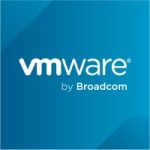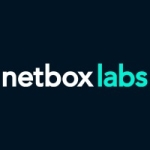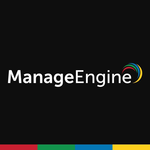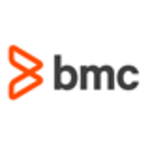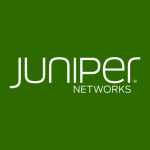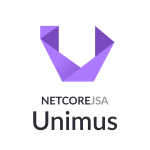What is our primary use case?
We have deployed SolarWinds Network Configuration Manager in a financial institution.
The solution is used to control all the equipment, configurations, backups, configuration management, and schedule jobs from a single point. There is a bit of automation involved.
What is most valuable?
Configuration refers to the specific settings and options that determine how a device or system behaves. It can include things, such as network settings, security settings, and other options that are specific to the device or system in question. One of the most valuable features of the solution was its ability to track and monitor changes to the configuration of devices on a network. This can be useful for troubleshooting and identifying potential issues. By keeping track of who made changes to the configuration and when it can be easier to determine the cause of any problems that may arise.
What needs improvement?
When it comes to the way of managing the network devices, SolarWinds Network Configuration Manager should provide the simplest way that devices can relate to the server. For example, when we want to get the devices on board, we go by SSH to make the SolarWinds Network Configuration Manager create the connectivity with the device. After that, we pull the configuration. It would be helpful if they could combine both so that everything will be done in one step.
There are times when you schedule a job or do another action, if an issue happens or something does happen in the network, you would like to receive reports, whether via SMS or via mail. However, sometimes it doesn't come. This needs improvement. Sometimes it takes time before it comes, and sometimes it doesn't come at all. You could then falsely be accusing yourself of not scheduling something properly, or maybe the timing doesn't match, or maybe the NCP is not synchronized with the server. You then realize everything working fine, but still, the notification doesn't come the way it's supposed to.
For how long have I used the solution?
I have been using SolarWinds Network Configuration Manager for approximately four years.
What do I think about the stability of the solution?
When you first deploy a solution there will be problems from time to time. You will have to address the issues as they arise.
I rate the stability of SolarWinds Network Configuration Manager a six out of ten.
What do I think about the scalability of the solution?
The company where I deployed the solution had approximately 17 branches across the country. The devices that were managed with SolarWinds Network Configuration Manager at that time I was there were approximately 1,200 devices.
I have had experience using other network management solutions in addition to SolarWinds Network Configuration Manager. Although it may be more expensive than some other options, SolarWinds is currently one of the best solutions available on the market.
I rate the scalability of SolarWinds Network Configuration Manager an eight out of ten.
How are customer service and support?
The vendor contacted us to inquire about the status of the solution and offered their assistance with the deployment. We informed them that we had everything under control, but appreciated the documentation they provided to guide us through the process. Although we did not end up needing further support, they were helpful and available to assist if necessary.
How was the initial setup?
The initial setup process for the SolarWinds Network Configuration Manager was somewhat complex, particularly due to the need to ensure that the devices being managed had the necessary base configuration, such as SSH, in place. However, once the devices were registered with NCM, we found it easier to navigate and use.
For the most recent deployment of SolarWinds Network Configuration Manager, a team of five engineers was involved. One engineer was responsible for managing the dashboard, while the other four were distributed to the site to ensure that the base configuration was properly set up on the devices to allow them to be registered with SolarWinds Network Configuration Manager. This project we recently worked on it took approximately six weeks to deploy. It was a large network.
The first step in deploying the SolarWinds Network Configuration Manager was to ensure that the network was properly set up and that all the devices had the necessary base configuration in place to allow them to communicate with the solution. This included preparing the desktop where SolarWinds Network Configuration Manager would be installed and ensuring that it had connectivity with all the other devices on the network.
After setting up the network and preparing the devices for communication with SolarWinds Network Configuration Manager, the next step was to prepare a database for the solution to use to store the configuration data. Once the database was set up, the next step was to configure SolarWinds Network Configuration Manager to connect to the database before proceeding with registering the other network equipment with the solution.
Lastly, we provide training for the network administrator who is going to take charge.
I rate the initial setup of SolarWinds Network Configuration Manager a nine out of ten.
What was our ROI?
The return on investment of SolarWinds Network Configuration Manager is decent.
I rate the ROI from SolarWinds Network Configuration Manager a six out of ten.
What's my experience with pricing, setup cost, and licensing?
In Africa, the cost is a major factor in decision-making for many companies. As a result, some companies may choose cheaper solutions, even if they are open-source, over more expensive ones, such as SolarWinds Network Configuration Manager. However, as an engineer, I believe that the functionalities and services offered by SolarWinds justify the cost. Nonetheless, many companies in Africa may still view the prices as unaffordable.
The cost of the license for SolarWinds Network Configuration Manager starts at $1,000 annually. Whatever the functionalities that you need, there are licenses for it, and every license comes with its own price.
There was a time when we wanted to use one particular SolarWinds functionality, and the license to unlock it was approximately $10,000. The cost depends on the functionality you choose.
I rate the price of SolarWinds Network Configuration Manager a four out of ten.
What other advice do I have?
The company we worked with did not have a maintenance contract with SolarWinds for the Network Configuration Manager. This may be because they were only interested in using certain specific features of the solution, such as configuration, backups, and scheduling jobs, and did not need the full range of options offered by the solution.
My advice to others is if you want to use good technology, or solutions, then you need to be ready to spend the money. If you want something good, you want quality, you want good performance for your network, or you want to be able to do everything in a simple way, then you should be able to spend the money so that everything can be done in the simplest way.
I rate SolarWinds Network Configuration Manager a nine out of ten.
Which deployment model are you using for this solution?
On-premises
Disclosure: My company does not have a business relationship with this vendor other than being a customer.









